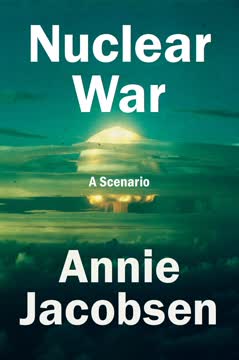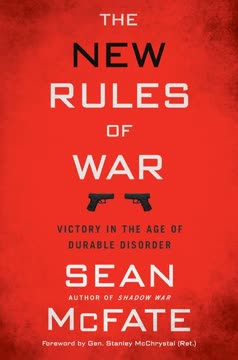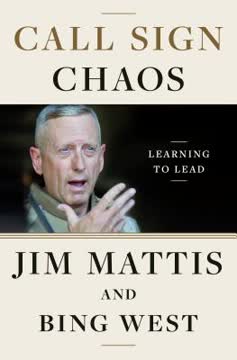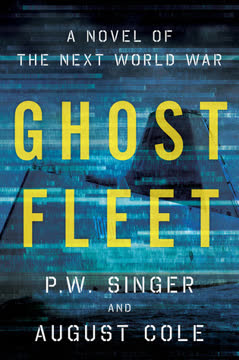Plot Summary
Shadows Over the Pacific
The world stands on the edge of a new era as the United States and China, now ruled by a technocratic-military "Directorate," circle each other in a tense, high-tech standoff. The global order is fragile, with energy crises, economic instability, and shifting alliances. In the depths of the Pacific, Chinese scientists make a discovery that will tip the balance of power, while American military and intelligence communities sense, but cannot yet see, the coming storm. The stage is set for a conflict that will be fought not just with ships and soldiers, but with code, satellites, and the very infrastructure of modern life.
The Deepest Discovery
Chinese geologists, led by Zhu Jin, uncover a massive, untapped gas field in the Mariana Trench, using technology quietly stolen from the West. This find promises energy independence and global leverage for the Directorate, fueling their ambitions. The discovery is kept secret, but the Americans, suspicious of Chinese activity near Guam, begin to take notice. The race for resources becomes a race for survival, as the Chinese leadership debates whether to use this advantage to secure their place atop the world order.
Ghosts in the Fleet
In California's Suisun Bay, the U.S. "Ghost Fleet"—a reserve of mothballed warships—sits in silent testimony to past power. Old salts like Chief Mike Simmons and young sailors like Torres maintain these relics, unaware that soon, these outdated ships will be America's last hope. As the U.S. Navy struggles with budget cuts, technological obsolescence, and a shrinking global presence, the Ghost Fleet's fate becomes intertwined with the nation's.
The New Sun-Tzu
Vice Admiral Wang Xiaoqian, a modern Sun-Tzu, shapes China's grand strategy. He argues that China's destiny is to seize the moment, using its new resources and military might to break free from American containment. The Directorate's leadership, a blend of military and business elites, debates whether to risk war or continue their economic rise. Wang's vision prevails: China will strike first, using surprise, deception, and new technology to cripple the U.S. and secure its future.
Cyber Seeds of War
The opening shots of the new world war are fired in cyberspace. Chinese cyber-militias, led by prodigies like Hu Fang, infiltrate U.S. military and intelligence networks, planting malware that will later cripple communications, GPS, and weapons systems. The Americans, confident in their air-gapped defenses, are unaware that their own infrastructure is now a ticking time bomb. The stage is set for a war where the first casualties are invisible.
The First Salvos
The war begins with a coordinated Chinese assault: a space station-mounted laser disables U.S. satellites, blinding and isolating American forces. Simultaneously, cyberattacks sow confusion, and Russian forces—opportunistic and allied with China—strike U.S. bases in Japan. In Hawaii, a surprise attack devastates the Pacific Fleet at Pearl Harbor, echoing history but with drones, missiles, and stealth. The U.S. military, caught off guard, reels from the onslaught.
Pearl Harbor Reborn
Chinese and Russian forces land in Hawaii, overwhelming U.S. defenders with advanced drones, cyberwarfare, and precision strikes. The U.S. Navy's most modern ships are sunk or disabled, and the island is occupied. Amid the chaos, acts of heroism and tragedy unfold: sailors fight desperate battles, Marines are cut down, and civilians are caught in the crossfire. The fall of Hawaii signals to the world that the old order is dead.
The Fall of Hawaii
Under Chinese occupation, Hawaii becomes a laboratory for modern counterinsurgency and collaboration. Some locals resist, forming the North Shore Mujahideen, while others adapt or collaborate. The psychological toll is immense: Carrie Shin, a civilian, transforms into the "Black Widow," a lethal insurgent assassin. Russian advisors like Markov study the insurgency, while Chinese generals struggle to maintain control. The occupation is brutal, and the seeds of future resistance are sown.
The Black Widow Emerges
Carrie Shin's journey from trauma to vengeance becomes a symbol of American resistance. Haunted by loss and violence, she uses her beauty and cunning to assassinate occupying soldiers and collaborators. Her actions inspire fear among the occupiers and hope among the oppressed. The psychological scars of war are laid bare, as Carrie's personal vendetta intertwines with the larger struggle for Hawaii's soul.
Resistance in the Shadows
The American resistance, led by military holdouts and local insurgents, wages a campaign of sabotage, ambushes, and psychological warfare. Major Conan Doyle and her ragtag band of fighters use improvised weapons, stolen tech, and local knowledge to strike back. The Chinese respond with increasing brutality, but the insurgents adapt, aided by covert support from the mainland and the ingenuity of American hackers and engineers.
The Ghost Fleet Awakens
With its modern fleet shattered, the U.S. Navy turns to the Ghost Fleet. Retired warships are hastily refitted, blending old-school engineering with new, jury-rigged technology. A diverse crew—veterans, draftees, and civilian techies—comes together under Captain Jamie Simmons and his father, Chief Mike. The Zumwalt, a failed prototype, becomes the flagship of a last-ditch effort to retake the Pacific. The fleet's resurrection is a testament to American resilience and improvisation.
The Battle for Space
Control of space becomes the new high ground. Billionaire Sir Aeric Cavendish, granted a letter of marque, leads a private assault on the Chinese space station, using diamond-coated spacecraft and mercenary commandos. Meanwhile, American and Chinese hackers wage a digital war, unleashing malware and counterattacks that cripple infrastructure on both sides. The battle for the heavens is as fierce and consequential as any on Earth.
The Arctic Gambit
With the Pacific blocked, the U.S. launches a bold plan: send its remaining carriers and Ghost Fleet through the Arctic, escorted by newly independent Greenland's icebreakers. The Chinese, forewarned by traitorous Russian intelligence, move to intercept. The stage is set for a climactic naval battle, as both sides race to control the approaches to Hawaii and the fate of the Pacific.
The Last Stand
The Ghost Fleet and its allies face the combined might of the Chinese and Russian navies. Outnumbered and outgunned, the Americans rely on stealth, deception, and the ingenuity of their crews. The Zumwalt's rail gun, finally operational, becomes the spearhead of the assault. The battle is brutal: ships are sunk, heroes fall, and the outcome hangs by a thread. Sacrifices are made—Mike Simmons and others give their lives to keep the fleet fighting.
The Price of Victory
The Americans win a costly victory, sinking the Chinese flagship and crippling the enemy fleet. But the cost is staggering: thousands dead, ships lost, and the Pacific in ruins. The psychological and moral toll is immense. Survivors grapple with trauma, guilt, and the knowledge that the world has changed forever. The war's end brings no easy answers, only hard truths about the nature of power, technology, and humanity.
Aftermath and Reckoning
As the guns fall silent, the world struggles to rebuild. Hawaii is liberated, but scars remain. The U.S. and China reach an uneasy truce, neither able to claim true victory. The Ghost Fleet's survivors return home, changed by war. Carrie Shin, the Black Widow, disappears into legend. The world order is reshaped: new powers rise, old alliances fracture, and the lessons of the war echo into the future.
The New World Order
In the war's wake, the world is transformed. Technology, once a source of strength, is now a source of vulnerability. Nations rethink their dependence on global supply chains and digital infrastructure. The U.S. Navy rebuilds, but the age of unchallenged American dominance is over. Individuals—heroes, survivors, and monsters—struggle to find meaning in a world forever altered by the next world war.
Characters
Jamie Simmons
Jamie Simmons is the central American protagonist, a Navy officer thrust into command of the Zumwalt and, eventually, the entire Ghost Fleet. The son of Chief Mike Simmons, Jamie is torn between duty and family, haunted by the legacy of his father and the trauma of war. He evolves from a by-the-book officer to an improvisational leader, learning to trust his crew's ingenuity and his own instincts. His journey is one of reconciliation—with his father, his family, and himself—as he shoulders the burden of command in America's darkest hour.
Mike Simmons
Mike Simmons embodies the Navy's old guard: tough, resourceful, and deeply committed to his ship and crew. As Jamie's estranged father, he brings both wisdom and emotional baggage to the Ghost Fleet's mission. Mike's hands-on expertise and moral clarity are crucial in keeping the Zumwalt afloat—literally and figuratively. His relationship with Jamie is fraught but ultimately redemptive, culminating in his self-sacrifice to ensure the fleet's survival. Mike represents the enduring value of experience and the cost of generational wounds.
Carrie Shin ("Black Widow")
Carrie Shin is a civilian transformed by war into a legendary insurgent assassin. Driven by personal loss and psychological trauma, she becomes the "Black Widow," targeting occupiers and collaborators with ruthless efficiency. Her actions blur the line between heroism and monstrosity, reflecting the war's moral ambiguity. Carrie's journey is one of pain, vengeance, and fleeting catharsis, as she becomes both a symbol of hope for the oppressed and a cautionary tale about the human cost of total war.
Vice Admiral Wang Xiaoqian
Wang is the mastermind behind China's war plan, blending ancient wisdom with modern ruthlessness. He is both admired and resented within the Directorate, embodying the tension between military ambition and political caution. Wang's belief in China's destiny drives the conflict, but his hubris and reliance on calculated risk ultimately lead to disaster. His arc is one of pride, doubt, and the realization that even the best-laid plans are subject to chaos and unintended consequences.
Conan Doyle
Major Carolyne "Conan" Doyle is a Marine aviator stranded in occupied Hawaii who becomes a guerrilla leader. Resourceful, determined, and haunted by loss, she leads the North Shore Mujahideen in a campaign of sabotage and resistance. Conan's journey is marked by sacrifice, hard choices, and the erosion of her own humanity. She is both a tactical genius and a victim of the war's psychological toll, embodying the resilience and tragedy of those who fight from the shadows.
Hu Fang
Hu Fang is a young Chinese hacker, a star in the Directorate's cyber-militia. Gifted and ambitious, she orchestrates the cyberattacks that cripple America's military infrastructure. Her story is one of pride, addiction (to both stims and the rush of hacking), and eventual downfall, as she is outmaneuvered by American counter-hackers. Hu's arc illustrates the double-edged nature of technological prowess and the personal costs of waging war in the digital realm.
Sir Aeric Cavendish
Sir Aeric is a flamboyant, unpredictable British-Australian tycoon who becomes a state-sanctioned space privateer. His wealth, imagination, and disregard for convention allow him to mount a successful assault on the Chinese space station, tipping the balance in the battle for orbital supremacy. Cavendish is both comic relief and a symbol of the privatization of war, showing how non-state actors can shape the fate of nations in the 21st century.
Markov
Colonel Vladimir Markov is a Russian special forces officer assigned as an advisor in occupied Hawaii. Cynical, experienced, and quietly empathetic, he studies both the occupiers and the insurgents, seeking to understand rather than simply destroy. Markov's interactions with Carrie Shin and the Chinese command highlight the complexities of occupation, resistance, and the psychology of violence. He is both a hunter and a witness, ultimately disillusioned by the war's brutality.
Vernalise Li
Dr. Vern Li is a Chinese-American engineer whose expertise in energy storage is critical to the Zumwalt's rail-gun project. Facing prejudice and suspicion from her own side, she perseveres, forming a bond with Mike Simmons and the crew. Vern's technical brilliance and outsider status make her both indispensable and vulnerable. Her arc is one of proving her worth, overcoming discrimination, and finding belonging in the crucible of war.
Jamie's Crew (Cortez, Brooks, Davidson, etc.)
The Zumwalt's crew is a patchwork of veterans, draftees, and civilian specialists, each bringing unique skills and perspectives. Their interactions—marked by conflict, camaraderie, and growth—reflect the challenges of forging unity in adversity. Characters like XO Cortez (a wounded veteran), Brooks (a young techie), and Davidson (an old hand) illustrate the blending of old and new, tradition and innovation, that defines the Ghost Fleet's fight.
Plot Devices
Multi-Theater, Multi-Domain War
The novel's structure mirrors the complexity of modern conflict, with simultaneous battles in cyberspace, outer space, the deep sea, and on land. This multi-domain approach heightens tension, allows for parallel storylines, and underscores the interconnectedness of modern warfare. The narrative jumps between perspectives—American, Chinese, Russian, civilian, and military—creating a mosaic of experience and consequence.
Technological Vulnerability and Deception
A central device is the exploitation of America's dependence on advanced, globally sourced technology. Chinese cyberattacks, hardware backdoors, and satellite strikes render U.S. forces blind and paralyzed. The Americans' eventual success comes from embracing low-tech solutions, improvisation, and deception—turning their own vulnerabilities into strengths. The Ghost Fleet's resurrection is both literal and symbolic of this shift.
Foreshadowing and Historical Echoes
The novel is rich in allusions to World War II, the Cold War, and earlier conflicts. The attack on Pearl Harbor, the use of letters of marque, and the resurrection of mothballed ships all echo history, creating a sense of cyclical fate. Characters reference Sun-Tzu, Mahan, and other strategists, using the past to foreshadow the outcomes of present choices.
Psychological and Moral Complexity
The story delves deeply into the psychological impact of war: PTSD, survivor's guilt, the lure and horror of vengeance, and the erosion of moral boundaries. Characters like Carrie Shin and Conan Doyle embody the personal costs of conflict, while leaders like Jamie and Wang grapple with the burden of command. The narrative refuses easy answers, instead exploring the gray areas of loyalty, sacrifice, and humanity.
Symbolism and Motifs
Recurring symbols—ghost ships, masks (literal and digital), the ocean's depths, and the "Black Widow"—reinforce themes of hidden danger, identity, and the unknown. The sea is both a barrier and a pathway, representing the vastness of conflict and the possibility of renewal. Masks, both in cyberspace and in battle, highlight the fluidity of identity and the deceptions of war.
Analysis
Ghost Fleet is both a techno-thriller and a cautionary tale, blending meticulous research with speculative imagination to explore how the next world war might unfold. The novel's core message is that technological superiority is a double-edged sword: the very systems that grant power can become fatal weaknesses when compromised. The story champions adaptability, resilience, and the human spirit, showing that victory comes not from gadgets or doctrine alone, but from the ability to improvise, unite, and endure. It also interrogates the psychological and moral costs of modern conflict, refusing to glorify war even as it celebrates heroism. Ultimately, Ghost Fleet is a call to vigilance: in a world where the lines between peace and war, civilian and combatant, and friend and foe are increasingly blurred, survival depends on remembering the lessons of the past, questioning the promises of technology, and never underestimating the ghosts of history.
Last updated:
Review Summary
Ghost Fleet receives mixed reviews, with criticism of underdeveloped characters and implausible plot elements. Some praise its exploration of future warfare technology and find it an exciting techno-thriller, while others find it poorly written and unrealistic. The book is noted for its detailed military technology descriptions and potential geopolitical scenarios. Readers appreciate its examination of technological vulnerabilities but criticize its lack of character depth and geopolitical context. Overall, opinions are divided on its effectiveness as both a novel and a strategic thought piece.
Similar Books










Download PDF
Download EPUB
.epub digital book format is ideal for reading ebooks on phones, tablets, and e-readers.






